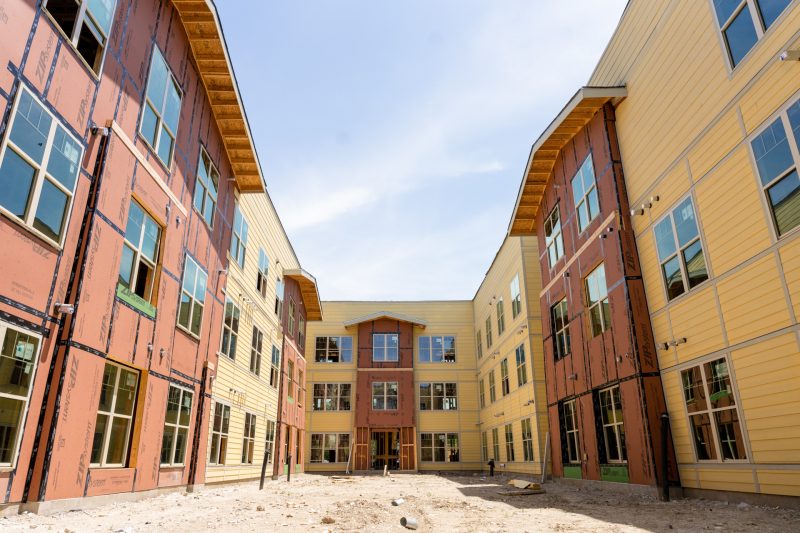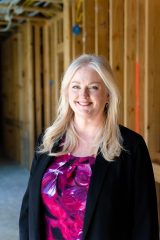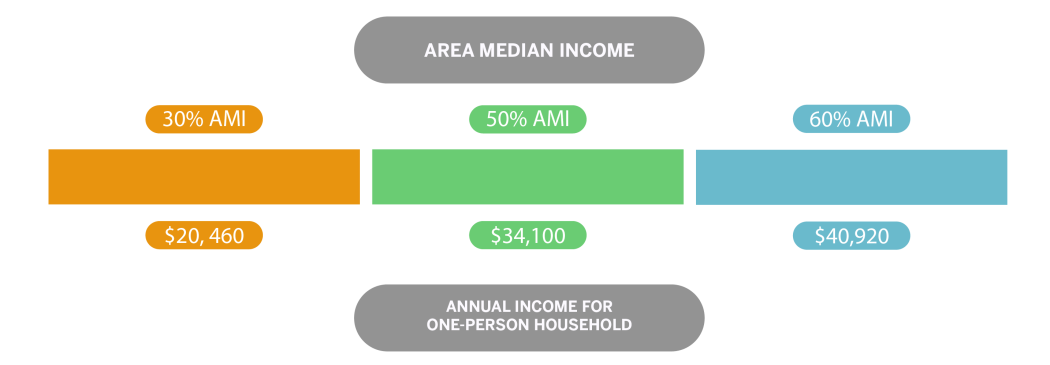
The Peak construction at Juliette Fowler Communities. Photography by Corrie Aune.
Natural light pours into the two-story lobby through windows. Decorative walls divide the large common space, where there are tables and a café. Further into the building, there’s a fitness room and activity center. The outdoor courtyards are set up for community garden space and grills.
This is the plan for the newest build at Juliette Fowler Communities. Named The Peak at Fowler, it is a $24 million, 144-unit, three-story residential structure. It’s about 50% completed, and the first residents are expected to move in by October, says Nicole Gann, the CEO of Juliette Fowler Communities.
Since the project was announced, about 200 people have signed up for Fowler’s interest list. The community can’t start accepting applications until 90 days before the first move-in, and applications will be handled on a first-come, first-served basis.
But not just anyone can live here. The development is available only to people age 62 and older who have a low-to-medium income.
“The last thing we want is for people living in an affordable product to ever feel like it’s significantly different, so we work really hard to blend the aesthetics across our campus,” Gann says.
The Peak is being constructed on the last piece of vacant land on campus. Fowler received $13 million through the low-income housing tax credit program to fund the project, and the organization will need to meet requirements set by the Texas Department of Housing and Community Affairs to have tax credits.
Residents are eligible to live at The Peak if they make no more than 60% of the area median income (AMI). As of May, 60% AMI is about $40,920 for a one-person household. The Dallas Area Median Income for fiscal year 2022 is $97,400 for a household of four.
A certain number of units will be designated for residents in three income categories: 15 for individuals who make no more than $20,460 (30% AMI); 58 for residents who make more than 30% AMI up to $34,100 (50% AMI); and 71 for those who make more than 50% AMI up to $40,920 (60% AMI).

Nicole Gann. Photography by Corrie Aune.
Rents vary based on unit floor plan and income and are determined by the Texas Department of Housing and Community Affairs. A person who makes up to 30% AMI would pay about $550 for a one-bedroom. An individual making up to 50% AMI would pay about $910 for a one-bedroom, and someone making up to 60% AMI would pay about $1,100.
There’s no sliding scale on rent rates. For example, if a person made even $1 more than the 30% AMI threshold, the person would pay the same rent as someone who made $33,099, $1 less than the 50% AMI threshold.
None of these are market-rate rents. The average rent of a one-bedroom apartment in Dallas is about $1,600, according to rent.com.
“One of the reasons why we got into this space is because we had such a long waitlist to get into our affordable properties, but the income level is so low,” Gann says.
The affordable properties she’s referring to are called Fowler Christian Apartments, and the average income for residents is about $13,000, she says.
In addition to supplementing Fowler’s supply of housing for low-income seniors, The Peak will be an option for individuals who aren’t eligible to live in places like Fowler Christian Apartments and can’t afford market-rate rents.
By 2029, there will be about 14.4 million seniors in the United States who fall in the “middle market” with an income between about $24,000 and $95,000, according to a 2019 study by the National Opinion Research Center at the University of Chicago, funded by the National Investment Center for Seniors Housing and Care. The upper limit, $95,000, may seem like a high income, but medical care and housing can be expensive for seniors.

Illustration by Jessica Turner.
The term “affordable housing” turns some people off, based on misconceptions about the people who live there, Gann says. But many of the residents who will call The Peak home are likely retired social workers, teachers or government workers, she adds.
While Fowler has received complaints from neighbors during the construction process, Gann says she hasn’t heard any pushback regarding the affordable housing component.
“East Dallas to me feels like the little Austin of Dallas because it’s a little quirky in all the good ways,” Gann says. “I just think the vibe is more suited to be accepting for this type of housing.”





